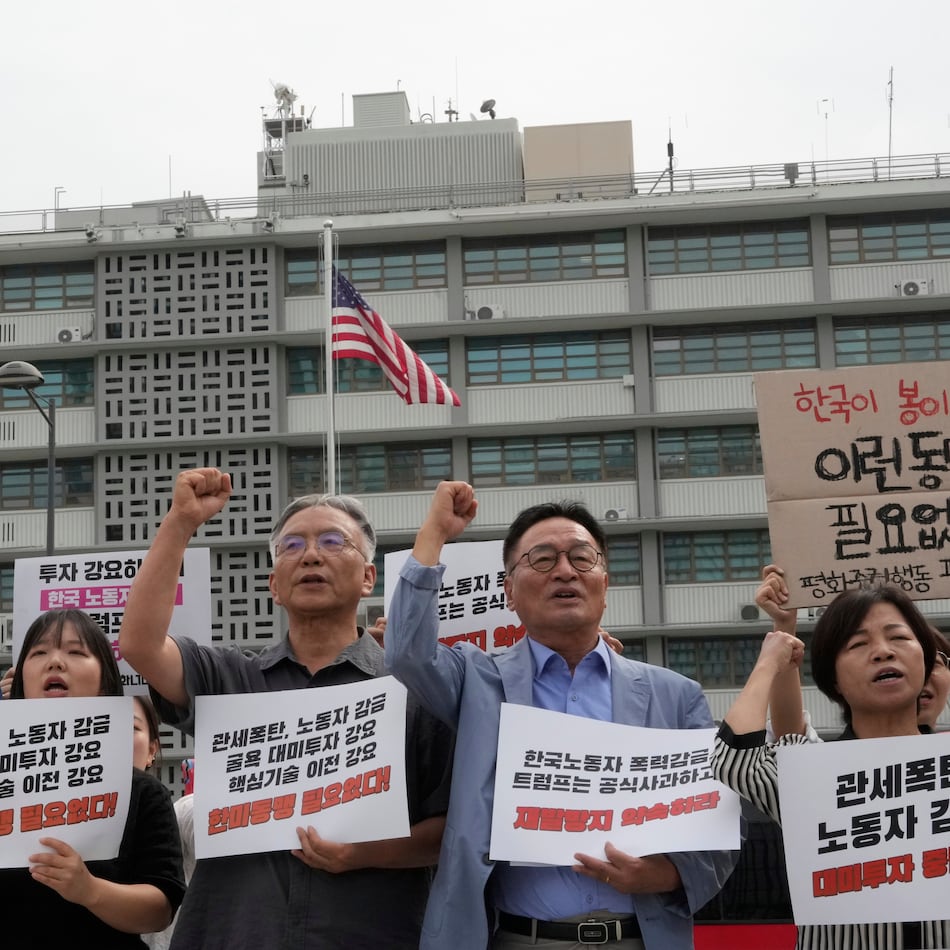NEW YORK (AP) — NBA players can now fire up those end-of-quarter heaves from deep without their shooting percentages being adversely affected.
The league has approved a change in the way statistics on those shots are recorded, which could spur players to take more heaves from very, very deep with hopes of a miracle make. It was finalized at the league's board of governors meeting on Wednesday.
The rule change was tried out at Summer League in Las Vegas back in July, as well as the smaller leagues that month in Utah and California.
For stat-keeping purposes, the NBA will tell teams that any shot taken within the final three seconds of the first three quarters and is launched from at least 36 feet away on any play that starts in the backcourt will count as a team shot attempt — but not an individual one.
Many players have avoided taking the miracle 50-footer or deeper shot at the end of quarters to protect their personal shooting percentages. The “heave rule,” the league hopes, will fix that.
According to SportRadar, players last season made about 4% of shots taken in the final three seconds of the first three quarters of a game with the 36-foot minimum distance. Based on its tracking data, Golden State's Stephen Curry made four shots under those criteria last season and Denver's Nikola Jokic made three.
All-Star decision looming
NBA Commissioner Adam Silver said Wednesday, at the end of the league's board of governors meeting, that he hopes to have the details on this season's All-Star Game — one that will have a U.S. vs. the world format — finalized by the start of the regular season.
The AP and other outlets reported on Sept. 3 that the league is closing in on finalizing another new format for this season’s All-Star Game, one where three eight-man teams — two from the U.S. and one composed of international players — would square off in a round-robin tournament.
Having 16 All-Stars from the U.S. and eight from other countries would be in line with the current breakdown of where NBA players are from; the league is about two-thirds American players, one-third international players.
“People have great memories of All-Star games. It’s part of the fabric of this league, the excitement that comes from it and the engagement from our players,” Silver said. "So, we want to fix it.”
The league has been heading in this direction for several months, especially after last season’s All-Star mini-tournament — untimed games to 40 points, with four teams of eight players each — was a flop.
Silver has wanted a more competitive All-Star format for years. Nobody has been willing to play much in the way of defense at the game in recent seasons — a 211-186 game in 2024 was the last straw there — so the league tried the tournament plan this past season.
European, domestic expansion
Talks on how to proceed with a new NBA-backed league in Europe, in partnership with FIBA, are continuing, Silver said.
“I think our basketball people now are very engaged in how the competition will work,” Silver said. “Our lawyers are thinking hard on how we can take ... a sort of cap-based system and revenue-sharing system with players and how we could apply that in a European framework.”
Silver also said the league's governors got an update on domestic expansion plans at its meeting that concluded Wednesday. The NBA said in July that it was beginning the process of formally exploring adding to its current 30-team league, though there is no timetable for when that will happen.
Seattle and Las Vegas have long been believed to be major candidates for NBA expansion if the league formally decides to move forward.
NBA Cup semifinal change
The NBA Cup, which has had a Final Four setup for its semifinals and final in Las Vegas — and will again this season — will be changing in 2026-27.
The league has decided that semifinals will be played at the home arena of the higher-seeded team in each conference starting next season. The final — which doesn't count on either team's record — will be the only game played at a neutral site.
Coach's challenge adjusted
The board approved a change to coach's challenges, starting this season.
During review following a challenge of an out-of-bounds violation, the replay center official — not the crew chief — “will determine whether a proximate foul should have been called,” the league said.
The NBA says it will expedite review times.
Last season was the first where referees could determine whether a proximate foul should have been called on certain plays. The change was unanimously recommended by the competition committee and league office.
___
AP NBA: https://apnews.com/hub/NBA
The Latest
Featured


